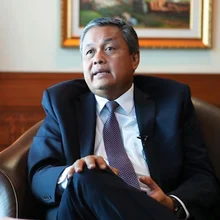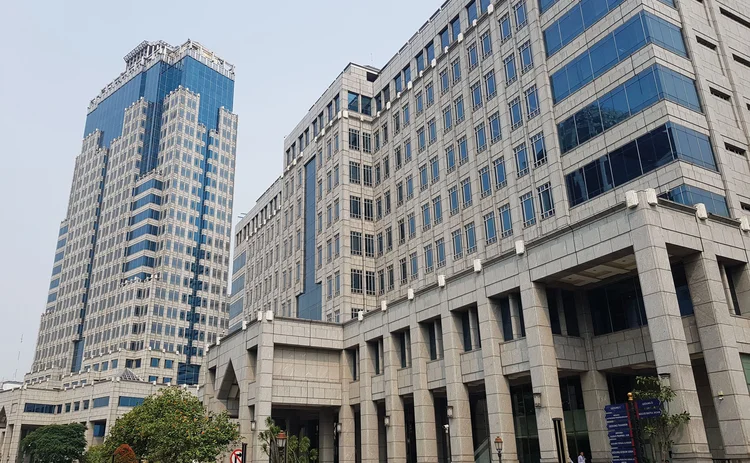
Reserve manager of the year: Bank Indonesia
Asian central bank stabilised rupiah’s fall during Covid-19 pandemic in large part due to new macro-factor strategic asset allocation framework

Bank Indonesia has not only weathered the Covid-19 crisis, but done so while boosting its foreign exchange reserves to a new record high of $138 billion as of January 2021. The portfolio now represents around 12.5% of GDP, and could finance 10 months of imports – well above the international three-month minimum adequacy standard. While reserves fell in the first quarter of 2020, they remained relatively stable on an annual basis, growing as part of a long-term gradual upward trend.
This achievement is in large part the result of the adoption of a new strategic asset allocation (SAA) based on a macro-factor approach in 2018. Its SAA takes into account assets and liabilities linked to currency and asset cycle risks. As some of Indonesia’s reserves are considered part of borrowing by the government itself (and injections to reserves often takes place through borrowing), this needs to be considered in the analysis of optimal FX reserves management. Bank Indonesia also looks at currency risks due to the net position between exports and imports, which in part drives US dollar liquidity needs in the domestic economy, as well as the impact of competitiveness in the domestic market and its impact on holdings.
To address currency risk, Bank Indonesia has developed strategies to match expected currency exposures working with monetary operations. It has also worked hard to reduce cyclicality in portfolio flows. On the asset side, the central bank has increased its asset diversification while maintaining limited risk levels.

The latest SAA guides the management of a multi-asset, multi-currency, two-tranche portfolio. It builds on previous efforts implemented since the 1997–98 crisis – when the institution was only invested in safe-haven currencies and reserves amounted to $18 billion – to build a robust buffer for the South-east Asian nation.
“Crises taught central banks the importance of having adequate reserves. However, higher reserves increased the cost of holding them,” says Hariyadi Ramelan, head of FX management until he moved to run monetary operations in February 2021.
“Hence the diversification into non-sovereign assets as a way to acquire higher returns, which correspondingly raises the need to also preserve them.”
In 2004, Bank Indonesia broadened eligible currencies to include Group of 10 currencies other than the US dollar, and in 2010 added emerging-markets sovereign debt both in local and hard currencies. A year later, it permitted commercial paper as an eligible investment. It then increased its exposure to US agency mortgage-backed securities through dedicated mandates with external managers in 2012, when it also deemed covered bonds eligible for internally managed portfolios.
In 2013, the central bank started to invest in global corporate bonds through an external manager, as well as in onshore Chinese government debt. Its internal team began to invest in corporate bonds in 2018, the year of the implementation of the macro-factor SAA.
Crisis response
The Covid-19 crisis unleashed volatility across markets worldwide, testing the resilience of Bank Indonesia’s more diversified and complex reserve management strategy.
In March 2020, liquidity declined in the US Treasury market, when investors abruptly sold Treasuries to access cash. During this risk-off period, Indonesia suffered sharp capital outflows. Between January 31 and March 24, the rupiah decreased by 17.6% against the US dollar. It prompted Bank Indonesia governor Perry Warjiyo to unveil a “triple intervention in the financial market” on March 2.

Bank Indonesia’s reserve management framework works in tandem with the institution’s monetary operations framework. Ramelan’s move to run monetary operations shows the level of interconnection. The new head of the reserve management department, Rudy Hutabarat, had served as head of the reserve management analysis and recommendation group, overseeing strategic and tactical asset allocation recommendations.
In a bid to stabilise the currency, Bank Indonesia simultaneously intervened in the domestic rupiah-denominated non-deliverable forwards (DNDF) market to mitigate exchange rate risk and in spot markets by selling US dollars, as well as buying local currency government bonds in the secondary market.
The approach proved costly in the short term: reserves decreased by more than $9.5 billion to $121 billion at the end of March. Nonetheless, the triple intervention was “effective in taming the demand for US dollars in the domestic market, and calming the sudden reversal from global investors”, says Ramelan.
Indeed, from late March, the rupiah started to recover lost ground, and, by June 10, it had risen by 19.2% from its March trough. And in subsequent months, it has remained stable.

The use of forwards proved especially useful in reducing US dollar liquidity pressures, limiting the need for spot market interventions that would have required the deployment of more reserves.
“With the DNDFs, we tried to reduce demand pressure from global investors or banks that needed US dollar cash by managing the maturity level,” says Ramelan.
“Through them, we can ease the pressure on liquidity in the short term – so we try to channel part of dollar demand to longer maturities of six months and nine months. This also decreases the need for intervention in the US dollar spot market.”
In addition to national measures, decisive intervention by the US Federal Reserve also played a crucial role in boosting liquidity.
In March 2020, the Fed launched the Foreign and International Monetary Authorities (Fima) repo facility. Currently in place until September 30, 2021, international monetary authorities with accounts at the Federal Reserve Bank of New York are eligible to use it. It allows, for the first time, international institutions to raise dollar cash by posting their US Treasuries to the Fed’s System Open Market Account. On April 9, 2020, Bank Indonesia secured access to Fima through a $60 billion repurchase agreement line. It stands ready for use if required to add US dollar liquidity as another backstop.
Burden-sharing
These developments came as the major macroeconomic consequences of the Covid-19 pandemic forced Indonesia’s authorities to buy government bonds. In a bid to finance higher public spending, Indonesian president Joko Widodo’s government temporarily suspended the 3% of GDP ceiling on the budget deficit until 2022. Additionally, it removed the ban on central bank purchases of longer-term government bonds in the primary market.
In July 2020, the central bank agreed to directly purchase 397.56 trillion rupiah ($27.6 billion) from the government in a burden-sharing scheme. According to the International Monetary Fund, the government’s budget deficit rose to 5.7% of GDP in 2020, up from 2.2% in 2019. The fund forecasts it will rise again to 5.9% in 2021.

In 2021, the IMF said government bond purchases were “appropriate in the current exceptional circumstances”. In the Article IV consultation, published on March 2, IMF directors praise the constraints Indonesian authorities have added to central bank bond purchases.
“To balance the benefits and risks of temporary monetary budget financing, they welcomed Bank Indonesia’s plan to conduct bond purchases in 2021 only as a last resort under the market mechanism,” the report says.
Nonetheless, the directors suggest that “clarifying the last-resort criteria would help enhance the monetary policy framework and safeguard Bank Indonesia’s operational independence”.
The report also highlights the share of non-resident holdings of rupiah-denominated government bonds declining from 38% of the total stock at the end of 2019 to 27% (or 5.6% of GDP) at end-September 2020. But the fund’s report says the foreign share “remains sizeable”, making Indonesia “vulnerable to global financial volatility, higher US interest rates and a stronger US dollar”. Over the same period, Bank Indonesia’s share of rupiah-denominated bonds increased from 10% to 20% of the total.
Robust reserves
In spite of this difficult environment, Bank Indonesia’s portfolio rapidly recovered lost ground, regaining almost $8 billion in market value in April 2020. This was mainly the result of government dollar-denominated bond issuance, which is added to the central bank’s reserves portfolio.
In April, Widodo’s government tapped international markets to finance increased public spending at home. His government raised $4.3 billion: $1.65 billion with 10.5 years; $1.65 billion with 30.5 years; and $1 billion tranche of 50-year maturity – the longest-dated US dollar bond ever issued by an Asian economy.
However, government debt issuance also represents a risk for the central bank’s reserves portfolio. This is one of the reasons why the institution adopted a strategic asset allocation based on macro factors in 2018.
“We always have to take into account that part of our reserves come from the government’s foreign currency borrowing. That must be part of our macro-factor approach,” says Ramelan.
The second macro factor is the balance between exports and imports, because it is one of the elements driving US dollar liquidity demand in the domestic market.
“We lock the currency risk by matching the currency composition based on a macro-factor approach, which aligns the sources and uses of reserves including global bonds issued by the government in US dollars, euros and Japanese yen,” says Anastuty Kusumowardhani, former head of liquidity and current chief representative for Bank Indonesia in Singapore.
“And we also match the currency composition in the basket used in imports and exports, and in exchange rate interventions. Additionally, we also consider the currency composition of our peer countries.”
Within these parameters, the board of governors sets the composition between US dollars and non-US dollars, and the reserves department manages this area in a passive manner.
“We cannot take any position for the currency. We have to maintain the currency composition in line with the SAA,” says Kusumowardhani.
“On the asset side, we can add new instruments and exposures, as long as they are within our risk tolerance.”
A key element in the central bank’s effort to balance return and risk is the division of its portfolio into two tranches: one for liquidity, the other for investment. The structure and size of both tranches is determined by liquidity needs across time horizons, reserve adequacy scenarios and return goals. The liquidity tranche serves to finance transactions, to cover the costs entailed by intervening in the FX market, or to meet larger drawdown requirements. By contrast, the investment tranche has longer horizons, and is focused on enhancing returns.
“Inside of the investment tranche itself, we have dual, complementary objectives. One part of it is focused on supporting the liquidity tranche, because we are still very active in G10 government bonds, and these operations may need higher assistance in some periods,” says Kusumowardhani.
“But the other part of the investment tranche has another goal, which is to enhance the return itself,” she says.
It is through this tranche that the institution diversifies its investments with new asset classes, and adopts higher-yielding investment strategies.
According to Central Banking’s Reserve Benchmarks 2020 survey, 64.9% of the 37 participating central banks said they tranche their reserves. Among upper-middle, lower-middle and low-income countries, the share rises to 90%. All lower-middle and low-income central banks surveyed tranche reserves.
“We realised that, nowadays, tranching is a very common tool for constructing a portfolio, in contrast to 2004, when we first developed it. It helps us to lengthen the investment horizon and increase diversification for a portion of the portfolio,” says Ramelan.
“Some may argue that tranching contributes to a potential small loss of portfolio efficiency, but we think it facilitates the institutional process of defining and communicating liquidity and financial goals to stakeholders”.
In order to reinforce the analytical and operational capabilities of the reserves department, the central bank adopted a new treasury system in October 2019. This upgrade integrates the operations of the front, middle, and back office in a shared environment, which includes portfolio management simulations.
“Before implementing the new treasury system, we managed portfolios in separated island systems. In order to carry out the simulations, we had to pull out the data from the treasury system, then conducted the simulations outside the system before we completed the transaction executions,” says Kusumowardhani.
“At present, the new treasury system enables us to do the simulations directly in the system and also monitor the portfolios in a real-time manner.”
The Central Banking Awards were written by Christopher Jeffery, Daniel Hinge, Dan Hardie, Rachael King, Victor Mendez-Barreira, William Towning and Alice Shen
Only users who have a paid subscription or are part of a corporate subscription are able to print or copy content.
To access these options, along with all other subscription benefits, please contact info@centralbanking.com or view our subscription options here: subscriptions.centralbanking.com/subscribe
You are currently unable to print this content. Please contact info@centralbanking.com to find out more.
You are currently unable to copy this content. Please contact info@centralbanking.com to find out more.
Copyright Infopro Digital Limited. All rights reserved.
As outlined in our terms and conditions, https://www.infopro-digital.com/terms-and-conditions/subscriptions/ (point 2.4), printing is limited to a single copy.
If you would like to purchase additional rights please email info@centralbanking.com test test test
Copyright Infopro Digital Limited. All rights reserved.
You may share this content using our article tools. As outlined in our terms and conditions, https://www.infopro-digital.com/terms-and-conditions/subscriptions/ (clause 2.4), an Authorised User may only make one copy of the materials for their own personal use. You must also comply with the restrictions in clause 2.5.
If you would like to purchase additional rights please email info@centralbanking.com test test test




